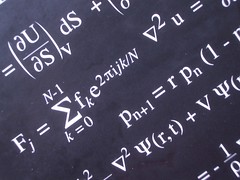 |
In a preprint Modular Classes of Q-Manifolds, Part II: Riemannian Structures & Odd Killing Vectors Fields, I examine the notion of a supermanifold equipped with an even Riemannian metric and an odd Killing vector field that is also homological. |
Background
In a previous post, I briefly disscussed the notion of a Q-manifold and their modular classes. This itself was based on my paper Modular classes of Q-manifolds: a review and some applications, in which I review the notion of the modular class of a Q-manifold (see [1]) and present several illustrative examples.
Q-manifolds have become an important part of mathematical physics due to their prominence in the AKSZ-formalism in topological quantum field theory and the conceptionally neat formalism they provide for describe Lie algebroids and Courant algebroids, as well as various generalisations thereof.
The preprint Modular Classes of Q-Manifolds, Part II: Riemannian Structures & Odd Killing Vectors Fields is a direct continuation in which I present a class of rather natural Q-manifolds that have vanishing modular class, I call theses Riemannian Q-manifolds.
Riemannian Q-manifolds
A Riemannian supermanifold we understand as a supermanifold equipped with an even Riemannian metric. These are, of course, a natural generalisation of pesudo-Riemannian manifolds, which are well studied objects. There are a few ways of interpreting the metric, such as the formal definition as a pairing of vector fields, but more informally a Riemannian metric defines a distance between “near-by points”. When dealing with supermanifolds this needs to be taken with a pinch of salt as supermanifolds are not truly defined via their points – we are really dealing with noncommutative algebraic geometry, though the noncommutativity is rather mild. There is also the issue of even and odd Riemannian metrics on supermanifolds, but here I will only deal with even ones.
Infinitesimal symmetries of a Riemannian supermanifold or Riemannian manifold are generated by Killing vector fields. Loosley, Killing vector fields give you “directions” in which the Riemannian metric does not change.
On supermanifolds, we have even and odd vector fields, this is very natural as everything on a supermanifold is \(\mathbb{Z}_2\)-graded. The simplest way to describe this is via their Lie bracket. So suppose that we have an even vector field \(X\), then the Lie bracket with itself vanishes automatically as
\( [X,X] = X \circ X – X \circ X =0\).
However, the definition of the Lie bracket for odd vector fields gives
\( [Q,Q] = Q \circ Q + Q \circ Q\).
Either we have \([Q,Q] = P\), for some even vector field \(P\), which is the “supersymmetry algebra”, or \([Q,Q]=0\). The latter is the definition of a homological vector field. Note that this is a non-trivial condition and is only non-trivially possible on a supermanifold.
A Riemannian Q-manifold, I define as a Riemannian supermanifold together with an odd killing vector field that is also a homological vector field.
The Canonical Volume and Modular Class
In almost exactly the same way as on a Riemannian manifold, Riemannian supermanifolds come equipped with a canonical Berezin volume. Without any details, a Berezin volume is something you can integrate on a supermanifold. It turns out, just as in the classical case, that the Berezin volume does not change in the direction of a Killing vector field.
The vanishing of the modular class of a Q-manifold tells us that there is a Berezin volume on that supermanifold that does not change in the direction of the homological vector field. On a Riemannian Q-manifold we have exactly such a homological vector field and so the modular class of a Riemannian Q-manifold vanishes. We call such Q-manifolds unimodular.
Final Remarks
With a bit of thought, one can quickly convince one’s self that the modular class of a Riemannian Q-manifold is vanishing. The aim of the paper is to show this very explicitly as a class of new examples of unimodular Q-manifolds. I give explicit examples thoughout the paper.
References
[1] Lyakhovich, S.L., Mosman, E.A., Sharapov, A.A., Characteristic classes of Q-manifolds: classification and applications, J. Geom. Phys. 60 (2010), no. 5, 729–759.